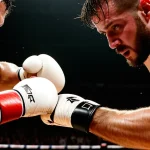Core Motivations for UK Athletes in Combat Sports
Delving into the psychological and personal drivers
The motivation for combat sports in the UK frequently stems from a complex interplay of psychological drive and personal ambition. UK athletes often cite discipline as a central pillar of their psychological drive. Training rigorously within combat sports instills a structured routine that enhances self-control and resilience. This discipline naturally fuels self-confidence, a crucial factor for athletes facing physically and mentally demanding opponents.
This might interest you : What role do sponsors play in the growth of UK combat sports?
Personal development is another powerful motivation for many combat sports competitors. Overcoming challenges—whether mastering a new technique or recovering from defeat—allows athletes to experience tangible growth. This growth aligns with their intrinsic desire for continuous self-improvement, making each training session more than just physical effort.
Anecdotal experiences reveal how many UK athletes find combat sports transformative. Stories of individuals who entered initially seeking fitness but stayed for the mental strength and camaraderie highlight the sport’s layered appeal. For example, some athletes describe their psychological drive moving from external validation to internal fulfillment, underscoring the evolving nature of motivation for combat sports UK participants.
Also to see : What are the Most Unusual Combat Sports Practiced in the UK?
Understanding these core motivations provides insight into why commitment to combat sports extends beyond competition, significantly impacting athletes’ holistic development.
Cultural and Societal Influences Shaping Participation
Combat sports hold a deep-rooted place in British sporting culture, reflecting traditions passed down through generations. Boxing, in particular, has a longstanding heritage in the UK, often seen as a symbol of resilience and working-class pride. This historical significance fosters community identity, making participation more than a physical activity—it’s a cultural expression.
Local communities play a crucial role in shaping who engages in combat sports. Areas with strong boxing clubs often exhibit high involvement, fueled by shared values and camaraderie. Cultural traditions within these communities encourage young people to see boxing and other combat sports as viable pathways for personal development and social connection.
Family heritage cannot be understated. Many fighters come from families where combat sports are hereditary pursuits, benefiting from knowledge, techniques, and motivation passed down across generations. This generational involvement nurtures skill development from an early age and strengthens the emotional ties to the sport.
In summary, British sporting culture, societal factors, and family traditions intertwine seamlessly to influence participation. This intricate blend creates a supportive environment that encourages continued engagement in combat sports across the UK.
The Role of Media and Public Figures
Exploring how media shapes perceptions and inspires fans
Media influence UK combat sports significantly impacts public engagement and the sport’s growth. Television and digital media platforms broadcast high-profile matches and behind-the-scenes content, amplifying the visibility of fighters and events. This exposure not only attracts new fans but helps demystify combat sports, presenting athletes as relatable figures rather than distant champions.
Celebrity athletes in the UK, such as notable fighters who have risen through the ranks, serve as powerful role models. Their inspirational stories of perseverance and success resonate widely, encouraging young people to pursue combat sports with dedication. These narratives highlight the discipline, resilience, and strategic thinking integral to the sport, offering a counterbalance to stereotypes focused solely on physical aggression.
Representation and diversity in media coverage are essential for broadening the appeal of combat sports. Showing athletes from various backgrounds and genders challenges traditional norms and promotes inclusivity. This inclusive representation helps reshape societal attitudes and ensures combat sports remain relevant and accessible to a diverse audience.
In summary, media influence UK combat sports by providing widespread exposure, highlighting celebrity athletes as role models, and fostering inclusive representation to inspire the next generation of participants and fans.
Accessibility and Institutional Support in the UK
Ensuring opportunity for all levels
The access to combat sports UK is deeply influenced by the availability of local gyms, clubs, and training centres. Across numerous towns and cities, these facilities provide essential platforms where individuals can train regularly and engage with combat sports in a structured environment. Many of these venues are equipped with experienced coaches who foster skill development and promote safety.
Support from schools and youth combat sports programmes plays a critical role in widening participation. By integrating combat sports into physical education or after-school activities, institutions lower barriers for young people to try these sports. This approach not only nurtures interest but also establishes early talent identification channels critical to the sport’s long-term growth.
Grassroots initiatives further complement this network by offering affordable and inclusive training options. Combined, these factors contribute to a robust ecosystem that encourages consistent youth engagement. Evidence suggests that effective training facilities UK and institutional backing directly correlate with increased youth participation and higher chances of talent development. This synergy creates a sustainable foundation for combat sports that benefits both communities and aspiring athletes.

